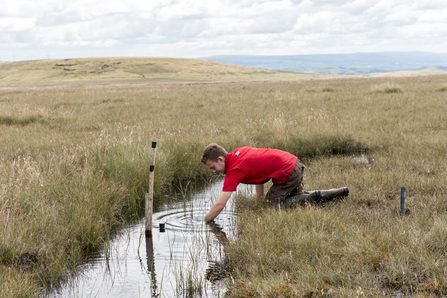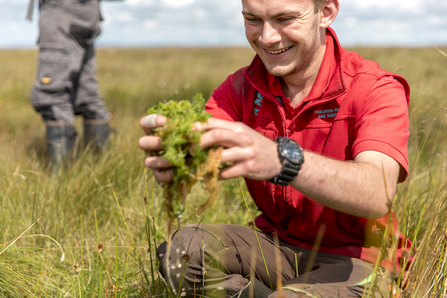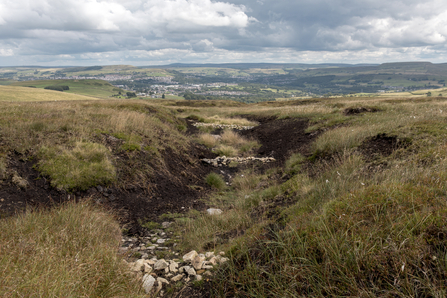The costs of restoring peatlands can be significant, labour intensive and time consuming. So why are we so committed?
Peatlands are amongst the most overlooked natural resources in the world, and many are unaware of their significance and important role in tackling today’s global climate change. Back in 2020 the Holcombe Moor National Trust team embarked on our biggest journey yet as part of a nationwide effort to restore the UK’s moorland. A few years in and the team will agree, not much makes us happier than a water filled peat bund, happily growing sphagnum, and a working stone dam.
The importance of a healthy peat bog
A healthy peat bog that’s wet and covered by specialist plants is important not only because they trap large volumes of carbon, but also because they help slow the flow of water and prevent flooding further downstream. They’re also important habitats for special and protected species of plants and animals. Golden plover, curlew, dunlin, and the common lizard, are just a few examples.




